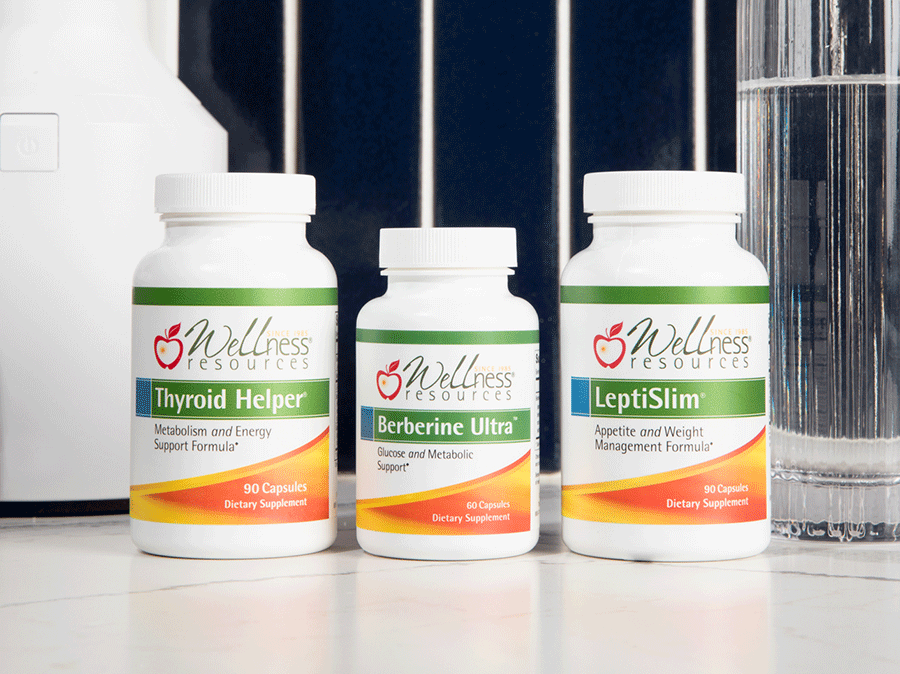HEALTH NEWS
Niacinamide: An Antioxidant for Pancreas and Liver
February 26, 2024

Vitamin B3 is a multifaceted nutrient known for its roles in liver and cholesterol health. Niacin’s bioactive forms extend the benefit far beyond these areas, encompassing crucial functions that affect overall metabolic health. In Wellness Resources' Lipid Helper, we use the niacinamide form combined with milk thistle and pterostilbene, creating a unique formula designed to support anti-aging, cholesterol metabolism, and blood sugar health. Let's explore the science behind niacinamide and its ability to enhance your well-being.
Niacinamide
Niacinamide, or nicotinamide, is a non-flushing form of vitamin B3 used for a variety of functions such as glucose metabolism, antioxidant protection, cellular energy, anti-aging mechanisms, and more. Niacin is the general name for vitamin B3 and needs to be converted into a bioactive form. Niacinamide or nicotinamide has an “-amide” group attached to niacin making it more metabolically active.
Niacinamide is critical for numerous reactions as it metabolically converts into an enzyme compound called coenzyme I or NAD (nicotinamide adenine dinucleotide), along with other bioactive nicotinamide forms. These niacinamide enzymes are a major part of energy production, mitochondria, and cellular energy systems. NAD is a critical compound for the SIRT-I and SIRT-3 anti-aging genes, weight, lipid, and metabolic pathways.
NAD and other coenzyme forms of niacin are required on a cellular level to metabolize carbohydrates, fats, and proteins into ATP or energy. More than 400 enzymes require NAD to turn on these metabolic reactions, making niacin and its bioactive forms crucial to health and physiology.
Niacinamide: An Antioxidant for Pancreas and Liver
Niacinamide acts as an antioxidant, protecting mitochondria inside the insulin producing cells of the pancreas called beta cells. It promotes healthy beta cell function and supports healthy glucose metabolism. Research demonstrates niacinamide’s protective function on beta cells in the pancreas through inhibition of enzymes that cause free radical stress.
Niacinamide also provides antioxidant support to the liver, aiding normal cholesterol metabolism. It inhibits iNOS (inducible nitric oxide synthase) and protects the endothelial lining of blood vessels, supporting cardiometabolic health. The addition of other nutrients like vitamins C and B2 creates synergistic metabolic effects.
In a study of a high-fat, high-fructose diet in rats, the group supplemented with niacinamide/nicotinamide had lower free radical activity and less oxidative stress in the liver. Consequently, cellular metabolic energetics improved, allowing healthy lipid metabolism.
A recent randomized clinical trial published in 2022 demonstrated benefits of niacinamide/nicotinamide in the liver and on cholesterol metabolism. Participants consumed 1000 mg/day of nicotinamide for 12 weeks. Compared to the control group, notable benefits were found in the quality of life of those who received the supplement.
Niacinamide Additional Benefits
Vitamin B3 as niacinamide and its bioactive form NAD protect and support over 400 different enzymatic pathways affecting all tissues in your body. Niacinamide and NAD are needed for the formation of red blood cells and steroid hormones. NAD is used for circadian rhythms, calcium signaling, immune cell activities, DNA repair, mitochondria homeostasis, and the smooth muscle function of internal organs.
New research finds that niacinamide is used in retinal tissues, buffering against metabolic stress and aiding mitochondria activity, providing protection for eye and vision health. Other recent research shows that niacinamide provides an inhibitory/antioxidant-like anti-aging effect with NF-kappa-b signaling and microglial cell activation in the brain. It also modulates cellular release of cytokines in the immune system.
Food Sources of Niacin
Animal proteins provide the highest bioavailable amounts of niacin. The best sources are beef liver, which provides 15 mg per 3 ounces, and a 3 oz chicken or turkey breast provides 10 mg. Plant-based diets often lack vitamin B3, with strict vegan diets providing the lowest amounts unless consuming foods fortified with vitamin B3. Plant sources of niacin such as nuts, legumes, and grains are less bioavailable and provide 2-5 mg per serving. Niacin in plants is only about 30% bioavailable due to fiber. Fruits and vegetables have trace amounts of niacin.
The amino acid tryptophan can convert to niacin, but it has a poor conversion rate and requires enough vitamin B2, B6, and iron to perform this. Individuals who chronically consume alcohol, have malnutrition or eating disorders, or gastrointestinal inflammation often lack adequate niacin and other nutrients. Niacin and its coenzyme forms are required more than any other vitamin-derived coenzyme.
Wellness Resources Lipid Helper contains 500 mg of niacinamide per capsule. It also contains two other outstanding nutrients, pterostilbene and milk thistle extract/silymarin, that provide anti-aging, metabolic, lipid, and blood sugar benefits. This unique combination makes it a blend of antioxidants that compliments other cardiovascular support products like Leptinal, Cardio Helper, Super Coenzyme Q10 Ubiquinol, and PQQ.
If over 400 enzyme systems require niacin, niacinamide, and its NAD coenzymes, are you getting enough?

